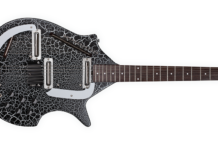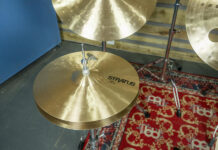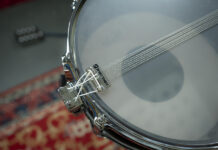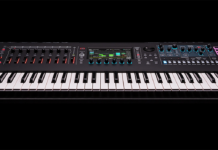
How to Add Some Mixolydian Flavor to Pentatonics
Learn how to add some flavor to your solos when using a pentatonic scale.
I would like to show you some ideas I use to add some flavor to my solos when I’m using a pentatonic scale.
While I feel the pentatonic scale is extremely useful and great in its most basic form, sometimes those five notes aren’t enough to make the statement I wanted to make in my phrase.
The idea of these examples is to help re-grab the listeners’ attention and make them say, “What was that!? That wasn’t what I was expecting!” That’s partly the idea we want to accomplish in our solos, right? To throw the listener off a little bit.
I was always drawn to the tonality of the mixolydian scale. When I first heard Jeff Beck and even the keyboard player Jan Hammer on Billy Cobham’s Spectrum album, I was hooked when these players would throw in a lick or phrase utilizing the mixolydian scale.
It always sounded good to me and kept my interest in the solo. It, to me, would draw attention back into the song as if it were making a bold statement. It made me think, “What’s coming next?”
I was even more drawn in when I would hear a lick played in a pentatonic scale and then out of the blue, mixolydian was thrown in mixing the two scales together.
So, what exactly is the mixolydian scale? For those who aren’t familiar, we’ll need to know this first! It is the fifth scale (dominant) in the major key. So, for instance, in the key of G major (G, A, B, C, D, E, F#), D is the 5th of that major key. It is major sounding because of the major 3rd (the third note of mixolydian. In this case, F#) but has the flat 7th (seventh note of mixolydian. In this case, C). This is in comparison to a standard major scale. Depending on the type of chord you’re playing over, this is either a D major chord or D7.
For the first example, here is a D Mixolydian scale for your reference:

In the second example, I demonstrate a phrase that I like to do while adding mixolydian into the phrase. When crossing the strings, for example thirrd string 15th fret to 2nd string 15th fret, I use a down-picking stroke on the 3rd string and an up picking stroke on the 2nd string. I find it easier for me to do it that way.
I encourage you to try it that way because you can get a more pronounced attack to the note which I favor. If you are more used to economy picking, you can do it that way too.
)
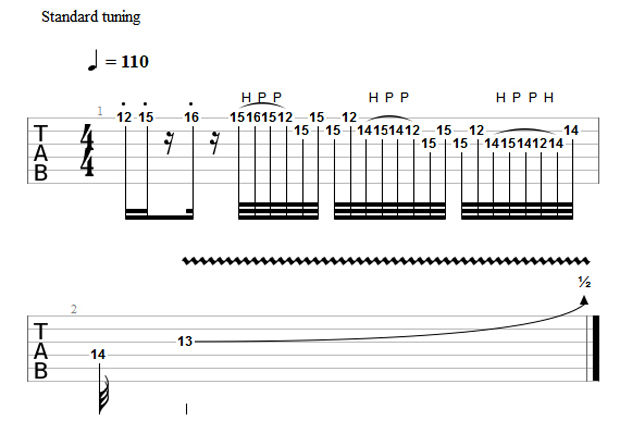
This last example is a phrase I used in a song my band did on our first release in a song called “Killin’ Floor.” It comes as a break down building into the actual guitar solo. It descends then ascends much in the same pattern highly emphasizing the major 3rd over what “should” be the minor 3rd. You may find too, that it perks up your ears thinking “This isn’t supposed to be here, but it works!”
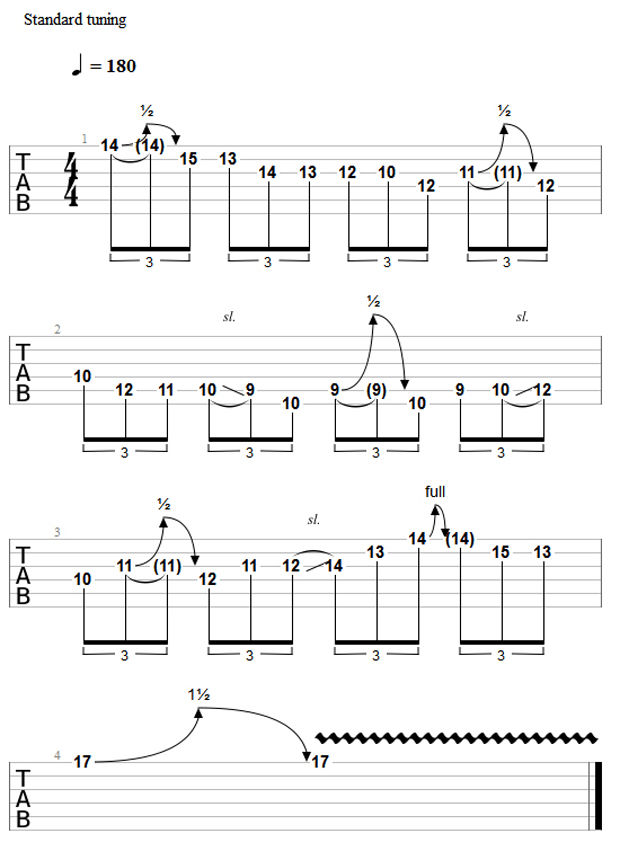
I used one position for these examples. Until next time, please explore all of the other positions of the pentatonic scale and add some of the mixolydian flavor to your pentatonic phrases! The ideas can be endless!
Geoff Unger is the guitar player and vocalist for three-piece, NYC-based metal band Symptom 7. A graduate of Berklee College of Music, Geoff studied jazz arranging and composition while under the tutelage of Jon Finn. Geoff also has appeared in Mike Varney’s Hometown Heroes. A multi-styled guitar player, Geoff regularly performs live with Symptom 7 and as a hired live/studio guitar player. Symptom 7 will be in the studio this fall recording the followup to their 2007 debut, Symptom 7 – Vol. 1. Check out Symptom 7 on Facebook.
Source: www.guitarworld.com

